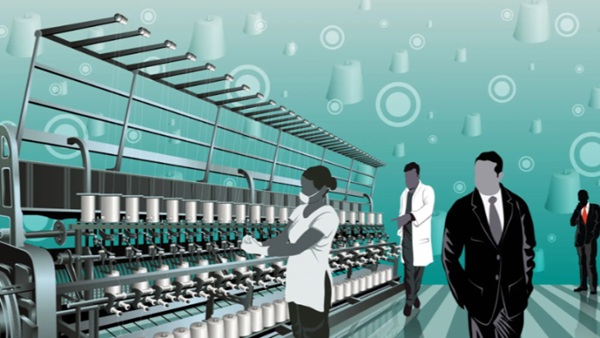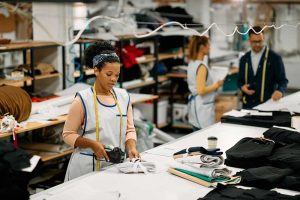There is a critical need to bridge the gap between the perception and reality of technology and automation in the manufacturing sector as seen through the eyes of the younger generation.
The Evolution of Manufacturing
In an era where technology reshapes industries at breakneck speed, manufacturing stands at the forefront of innovation. The term “Industry 4.0” or the “Fourth Industrial Revolution” encapsulates this transformation, marked by advancements like automation, AI, and IoT (Internet of Things) – all of which are revolutionizing how goods are produced. This evolution isn’t just about machines; it’s about creating environments where human creativity and technological prowess merge to solve complex challenges.
Misconceptions and Realities
One of the biggest hurdles in attracting young talent to manufacturing is the outdated perception of the industry. Many still envision assembly lines reminiscent of the early 20th century, characterized by repetitive, labor-intensive work in less-than-ideal conditions.
However, modern manufacturing facilities are often high-tech, clean, and equipped with cutting-edge technology. Here, workers might be found programming robots, managing supply chains through digital platforms, or designing products using 3D modeling software.
Why Manufacturing Needs Young Minds
The manufacturing sector faces a significant skills gap, exacerbated by an aging workforce and a lack of new entrants. This gap isn’t just about filling positions; it’s about injecting new ideas, embracing technology, and ensuring that manufacturing remains competitive and relevant.
Younger generations, often dubbed Millennials and Gen Z, are tech-savvy, bring fresh perspectives, and crave career purpose. Manufacturing, pivoting towards smart factories, offers a blend of technology, innovation, and tangible impact – and needs this younger talent to guide the industry’s path heading into the future.
Strategies for Attraction and Retention
What are some ways to attract this younger generation of talent? There is an opportunity to highlight key attributes of the field, including showcasing both examples of technological integration and the use of cutting-edge technology in manufacturing.
From robotics to data analytics, promoting these tools can make the field as appealing as any tech startup.
Career Path Transparency
Young professionals seek clear career progression. Manufacturing should emphasize pathways where skills in technology, engineering, or even the arts can lead to significant roles in design, innovation, and leadership (and not just in production).
Purpose and Impact
The sector has an opportunity to emphasize – through strategic messaging – how manufacturing contributes to society, through not only products but also via innovation that drives economic growth, sustainability, and community development.
Hands-On Programs and Internships
Programs that offer real-world experience can demystify manufacturing. Students who engage in internships or workshops often leave with a better understanding of the industry’s dynamic nature. Companies can be at the forefront of providing these types of opportunities to the younger generations.
Cultural Shift
Companies need to adapt their workplace culture. Flexibility, continuous learning, and a collaborative environment can make manufacturing jobs more appealing to a generation that values work-life balance and personal growth.
Showcasing Success
Sharing stories of young professionals who have made a mark in manufacturing can serve as inspiration and work to attract new talent. These narratives can highlight the various roles, from engineers to factory managers and operational excellence professionals, and inspire the futures of Millennials and Gen Z.
The Future of Manufacturing
The future of manufacturing isn’t just about producing more efficiently; it’s about creating, innovating, and solving global challenges through technology.
For the younger generations, this field offers not just a career, but truly a canvas for their ideas where they can contribute to solutions such as sustainable production, reduction of waste, or even development of new materials.
It’s now time to land this plane…
Encouraging young people to consider manufacturing careers requires a narrative shift. It’s about painting a picture where technology, innovation, and meaningful work intersect.
Manufacturing can become attractive for those looking to make a real-world impact while leveraging their digital skills and creativity. How can this happen? By the industry making a true effort to address the skills gap with targeted education, to showcase the sector’s evolution, and to align job offerings with values of the new workforce. This approach will not only rejuvenate the industry, but also will ensure its relevance and vitality in the global economy.
The Empirical team can drive your manufacturing and operations efforts forward to help meet your business objectives! Want to find out more about what we have done for other clients and what we can do for you? Reach out to us: hello@thinkempirical.com; (610) 994-1139.



